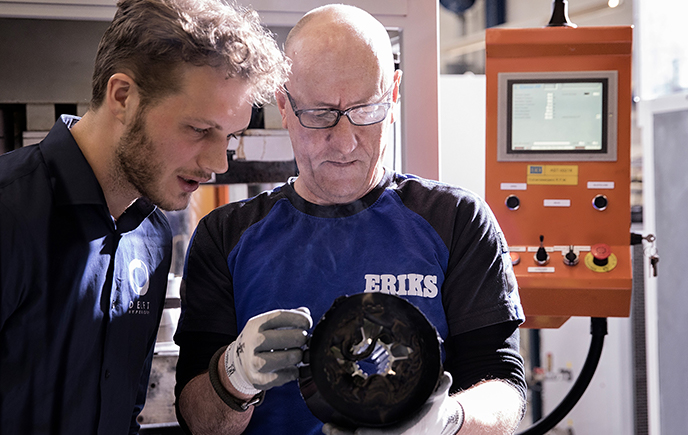In this article
ERIKS Collaborates with TU Delft Students to Scoop Second Place
The world of advanced technology, and the culture that surrounds it, is moving at an incredible pace, with developments that we could never envision coming to the forefront of the industry - take Elon Musk’s SpaceX Hyperloop competition as the perfect example.

You may ask, what exactly is it? Well, Hyperloop is an energy-efficient transport system in which pods travel at high speeds through a vacuum tube. It is believed that this system could one day travel at the speed of an airplane, reaching an unimaginable top end of 1220 km/h. So let’s put this into perspective, this technology could see us travel from Amsterdam to Paris in approximately 30 minutes.
The essence of the competition was straightforward – whoever shoots the fastest wins. Think of a gun slinging duel in a Wild Western movie. And ERIKS’ know how and expertise on drive systems and high-tech solutions was the bullet in the armoury.
Aerospace Engineering student Pieter-Bas Bentinck, who was part of the 38-strong Delft team, said: “Partnerships are crucial, because we are students and have a limited budget. We had partners that only provided financial support, but the people at ERIKS made their time, expertise and components available. What’s more, they were involved from a very early stage.”
ERIKS Head of Communications, Daan Heijbroek added: “Because of the innovative character, the Hyperloop project is a good match for ERIKS."
Discussions got underway and it became quickly apparent that ERIKS’ advice during the motor design phase would be pivotal to any success. The first topic that required addressing was whether to opt for an electric motor with a wheel drive or a linear induction motor. Effectively, the goal was to win, so top speed was the focus, therefore an electric motor was the only viable option. The design had to have the best power to mass ratio, generating power at the lowest weight level.

Then came choosing the perfect wheel, a part of the project that proved one of the most difficult challenges, putting ERIKS’ ingenuity and innovation truly to the test. It wasn’t as simple as reinventing the wheel but a bit of out the box thinking didn’t go a miss.
With the temperature of the tyres potentially rising to 200 degrees in as little as 15 seconds, the wheels were a crucial design element, particularly the choice of material – grip and torque were key, but the rubber had to remain attached to the aluminium.
Using ERIKS’ rubber technology department in Alkmaar, and the Elastomer Research Testing Centre in Deventer, three new compounds were developed by adding fibres to the rubber base. Only one was selected, but the others have already been earmarked for future projects – even more forward thinking.
ERIKS’ expertise was once again called upon during the braking system phase, for selecting the appropriate and, most importantly, safest components. ERIKS supplied elements throughout – pipes, pressure relief, ball and electromagnetic valves - but it was the specialist knowledge that had one of the greatest effects - you can say they are a co-creator of choice.
The afternoon of the competition was hot and humid, causing the motor to overheat, which led to the activation of an innovative safety mechanism that shut down the pod before hitting its calculated top speed. Although the unforeseen weather conditions didn’t allow the pod to travel at its peak, it still managed a respectable 142 km/h, claiming second place overall.
Bentinck concluded: “We were very pleasantly surprised by their huge involvement in the technical area. You could say that we would not have succeeded without ERIKS."
For more information, get in touch with your local ERIKS Service Centre who will be happy to discuss your options.
#ERIKS #LetsMakeIndustryWorkBetter #TUDelft #Hyperloop #Competition #Aerospace #Engineering

